Components along path problems
-
I've tried "Copy Along Path", and "Component Stringer", but neither will do what I need (see attached photo). Doing it by hand is a real pain. Any ideas?
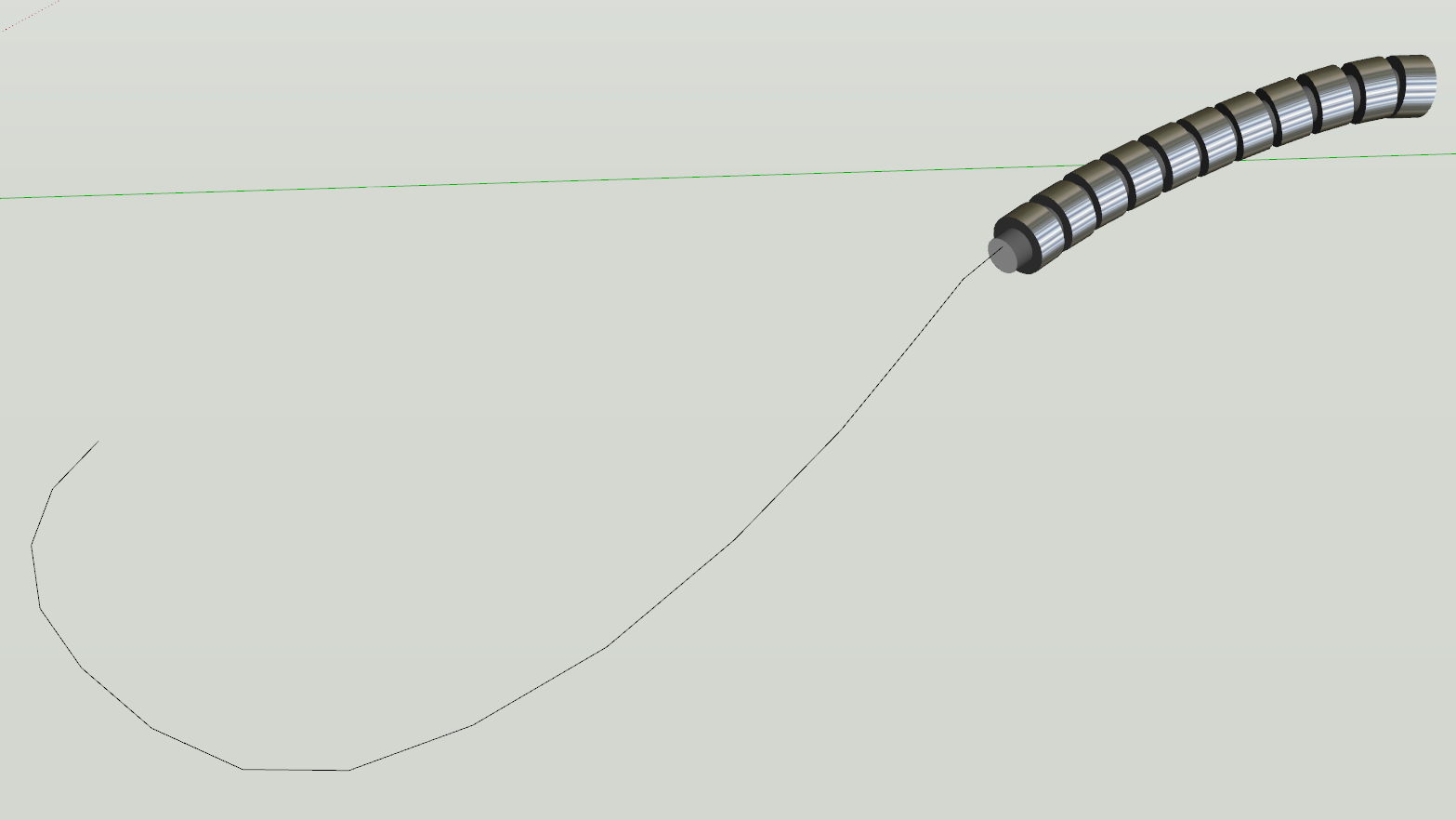
-
It appears that brunette's hair needs some conditioner. I mean, the path appears to show hard edge, soft edge, hidden edge.
Doesn't Component Stringer work along a regularly segmented path? I don't know this for certain. I will have to practice.
With Fredo6's BezierSpline you have quite a number of options in generating curves, plus the ability to convert to polyline, polyline segmentor, polyline divider. The tube could be formed with tube along path, which makes it into a group. Retaining the path curve should allow "CStringer" to work??
EDIT: Wait a minit. How did you get that reflective highlight effect? -
hi
for Component Stringer I made up a translucent 'glider' that I use to set up the path.if you need to scale or rotate, it has flat surfaces, and when it's right you just swap your shape on one of the 'gliders'.
john
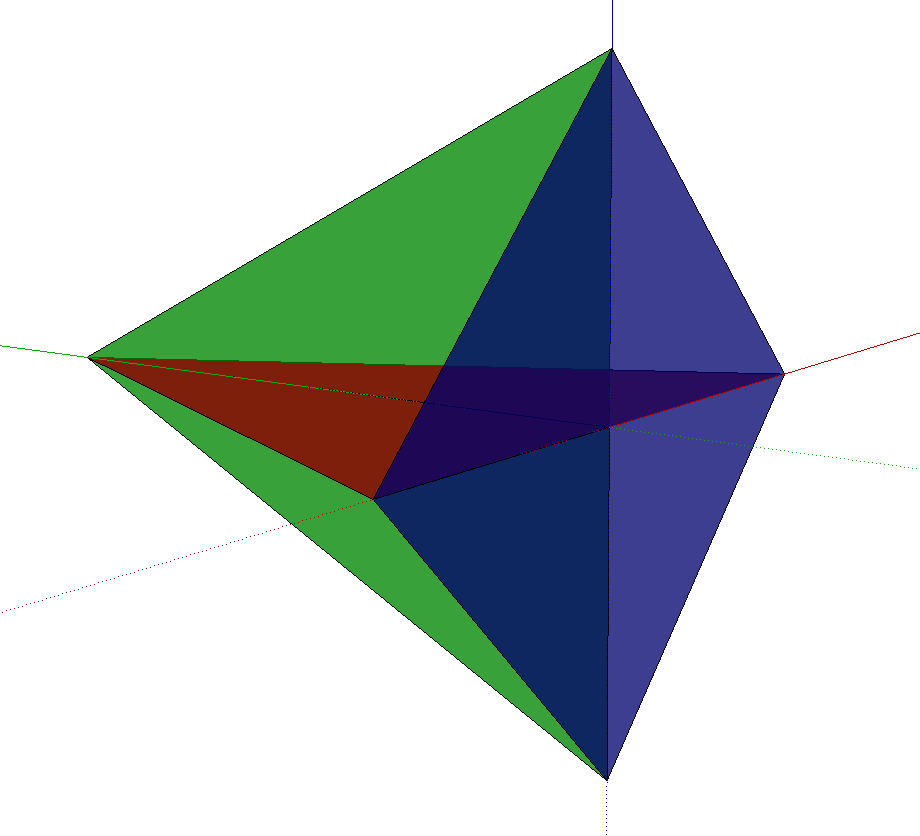
-
@mitcorb said:
It appears that brunette's hair needs some conditioner. I mean, the path appears to show hard edge, soft edge, hidden edge.
Doesn't Component Stringer work along a regularly segmented path? I don't know this for certain. I will have to practice.
With Fredo6's BezierSpline you have quite a number of options in generating curves, plus the ability to convert to polyline, polyline segmentor, polyline divider. The tube could be formed with tube along path, which makes it into a group. Retaining the path curve should allow "CStringer" to work??
EDIT: Wait a minit. How did you get that reflective highlight effect?90 percent of what you said went right over my head. I have very little experience with plugins, don't know what a polyline is, and don't understand what you were saying about a tube along path. Yeah, I are pretty dumm

The reflective highlight effect is just a texture.
-
there's some excellent experiments by Simon Le Bon around this page..http://forums.sketchucation.com/viewtopic.php?f=323&t=23616&hilit=Component+Stringer&start=30#p201164 some of mine in there as well.
-
Here is just an image using bezier converted to polyline divider, Component Stringer with some odd sized tube section. I forgot that you place the component in some relation to the path. So instead I just moved the path after, to align with the pipe sections, then did Tube Along Path.
As you can see, if you use too tight a curve, the components in the string wander off.
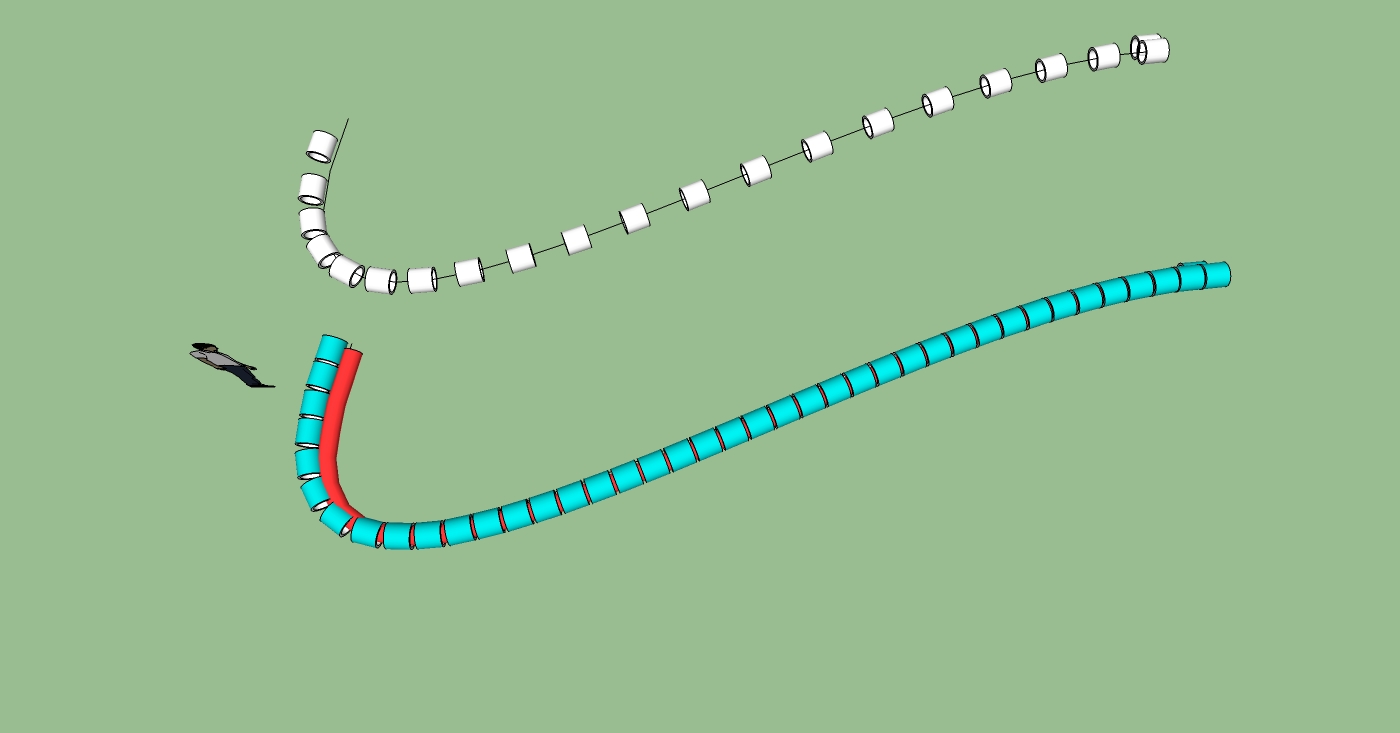
-
And while I was dithering around, I missed your reply. Sorry about that. And you ain't dumb, no way.
-
@mitcorb said:
Here is just an image using bezier converted to polyline divider, Component Stringer with some odd sized tube section. I forgot that you place the component in some relation to the path. So instead I just moved the path after, to align with the pipe sections, then did Tube Along Path.
As you can see, if you use too tight a curve, the components in the string wander off.This is going to sound strange, but I cannot see the image unless I am posting a reply, then I can scroll down and see it. Weird.
Anyhow, that looks promising. I've never used bezier spine, guess I'll have to see if I can figure it out. Thanks for your timely replies.
Driven, I am working my way thru the thread that you referenced. Thanks.
-
Ah, now that I've posted my reply I can see your image. Feel like I have one foot in the Twighlight Zone
-
@hellnbak said:
Ah, now that I've posted my reply I can see your image. Feel like I have one foot in the Twighlight Zone
What makes you think you don't?

-
@mitcorb said:
....
As you can see, if you use too tight a curve, the components in the string wander off.That doesn't seem to be the case for me, Instead, the components just scrunch up and intersect one another

-
Well, I finished what I needed to do, but just did it manually, one component at a time. I know that some of the suggested methods would have been much more efficient, and accurate, but I just needed to get this done and it will take time to learn any of these new methods.
It ain't perfect, but it won't be viewed close up so I guess it's close enuf for my purposes.
Thanks to everyone for all the input, very much appreciated, as always.
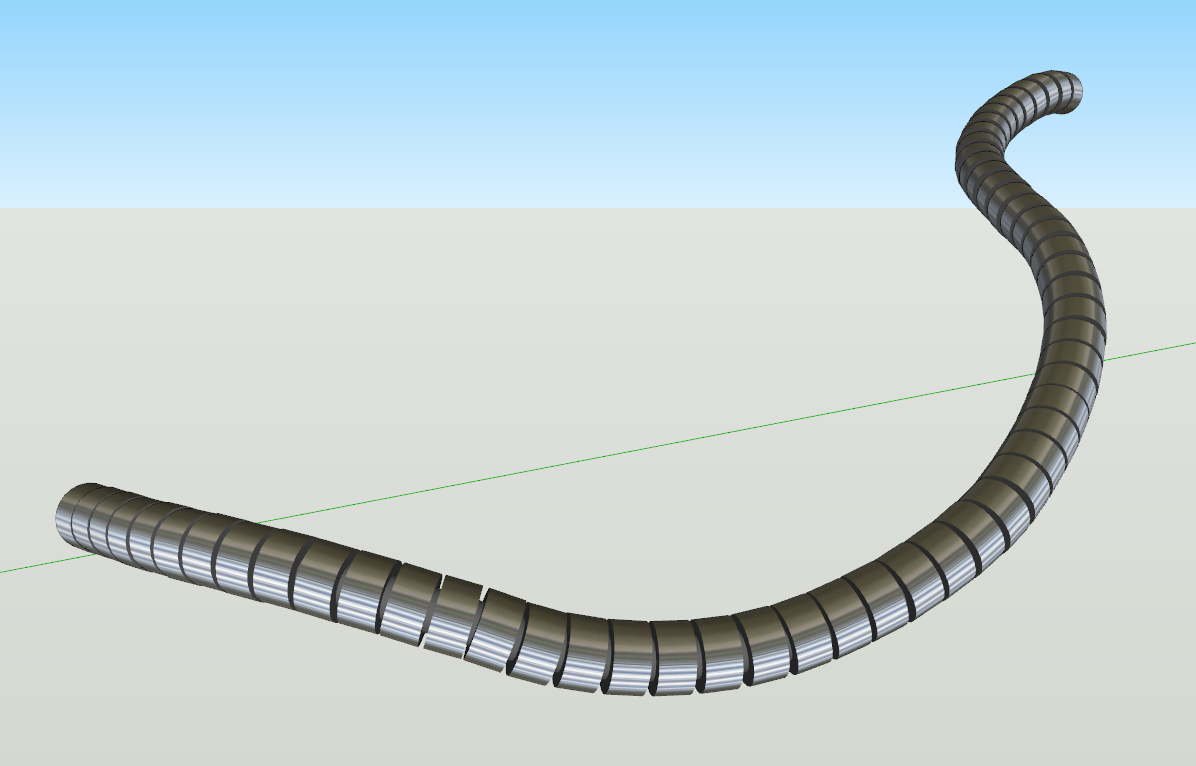
-
Hi, hellnbak:
Your results look right enough. Is this supposed to be like a shielded tubing? -
@mitcorb said:
Hi, hellnbak:
Your results look right enough. Is this supposed to be like a shielded tubing?Thanks. Yeah, something along those lines.
-
I kept the model file that I made the my above image from. Because I didn't feel I was finished. Last night I moved one by one the stray components into their "right" positions. All by eye.
I guess you have to plan the path and set the segments of that path just so, in order to get the results.
I had the same experience as you on the intersecting and overlapping on the unpainted example, so I edited the component and move stretched the end face so that there was no overlap.
As for the inner tube, there is no reason not to use follow me but maybe the ends won't be quite right. -
Tim, I'm curious about your model. Where is the component's origin located?
-
Hi, Dave:
I will have to look at it when I get to the house and respond. I am stealing a "minute" at work to see what's been happening here.
-
Hi, Dave:
Sorry for the delay.
Attached is another view of the file. I did not take the time to set the component axes when I started the model, so I have the axes on display, now. Is this what you seek?
A few minutes ago, I saw the last posts in ComponentStringer thread, and got re-informed.
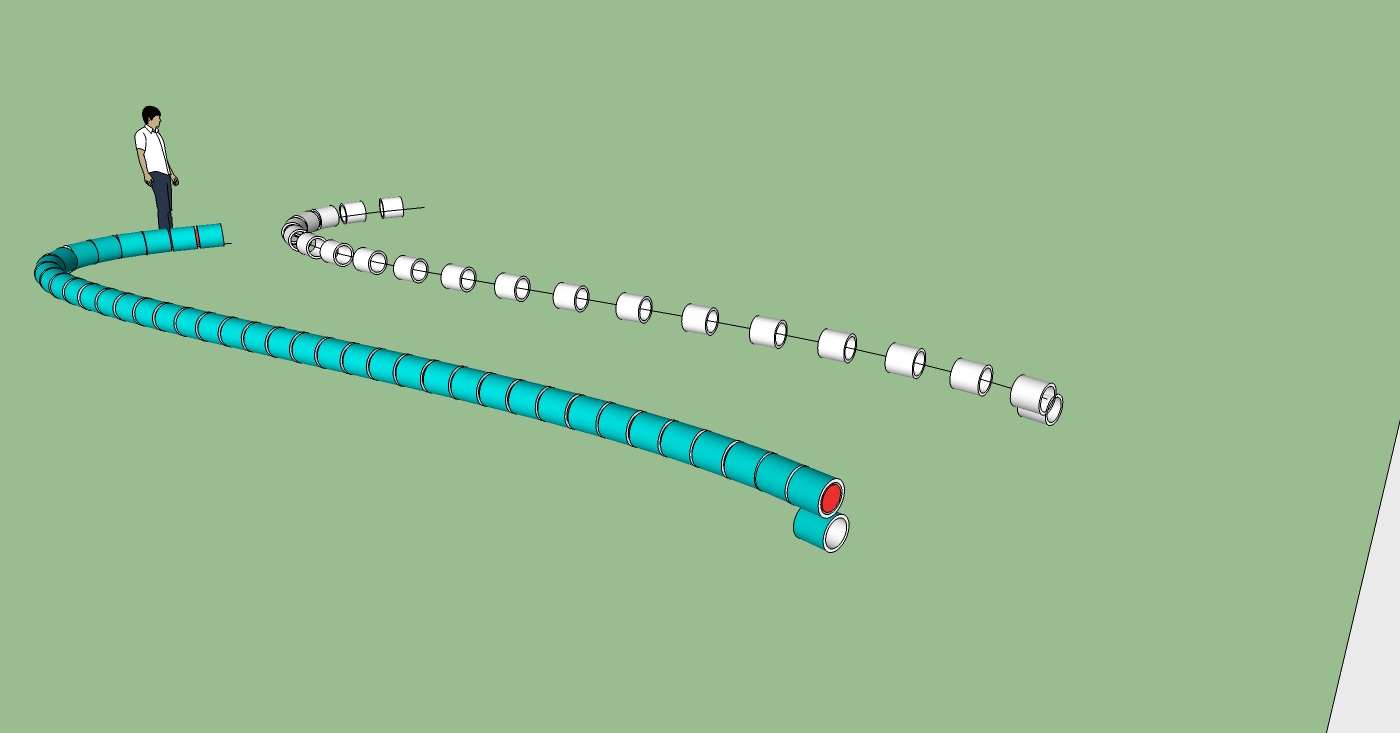
-
Well, I see that axes are not displayed in the image. I wonder if I should have used a .bmp instead. Attached is the .skp
-
Aha! If you're interested in running the tubes down the path again, try this. Move the component's origin to the centerline of the tube. You'll get slightly different results if the origin is at one end of the tube or midway down its length. Maintain the same axis orientation you have now, though.
Advertisement







